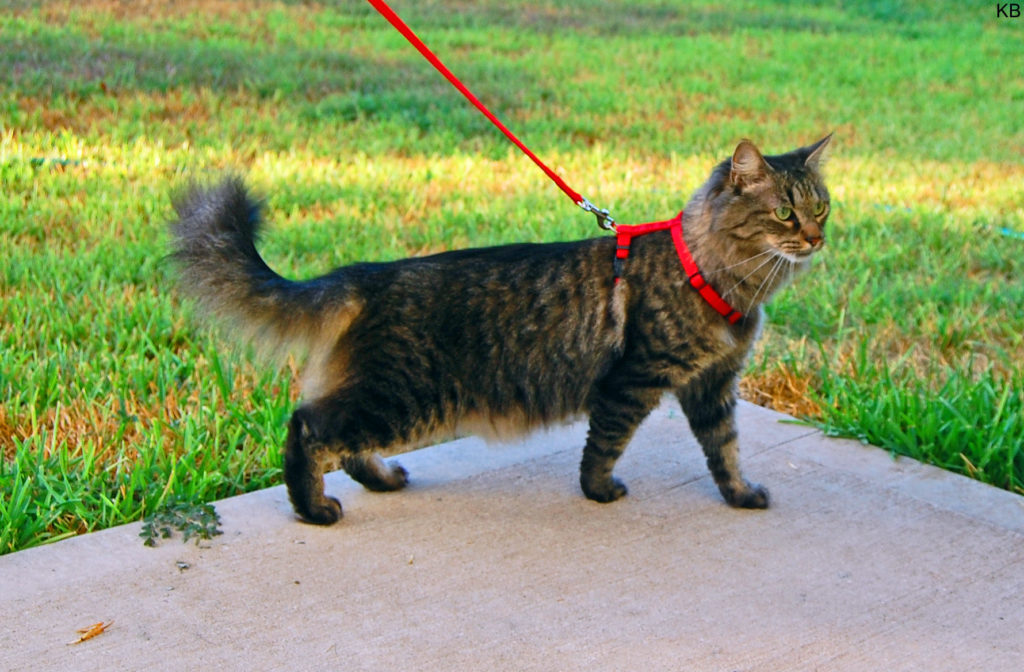Stripey is the dog I never had. Though she meows instead of barks, she displays a puppy enthusiasm for walks on a leash. At times, I I even considered taking her on a hike. Maybe it was because I forgot to tell Stripey that she is a cat. Maybe she knows but decided to play along. Regardless, she represents the growing number of cats whose worlds are confined to the walls of houses and apartments. Training these felines to walk on leashes gives them safe passage into the exciting world of the outside that they naturally yearn for.
Cats — at any age — can be trained to walk on leashes if the proper steps are taken, says Bonnie Beaver, D.V.M., a veterinarian specializing in animal behavior and chief of small animal medicine at Texas A&M;’s College of Veterinary Medicine in College Station.”It could take a few days to perhaps a week to train a cat, depending on the personality of the cat and how often the owners try the lessons,” she says. Thus, here our 6 steps for how to train a cat to walk on a leash.
6 Steps: How to leash train a cat
- Shop for a cat harness that fits the barrel of your cat’s body — not too snug and not too loose. Fashion is key here. Stick with colors that don’t clash with his furry coat. No dignified calico want to sport a neon pink harness in public. And get a matching leash.
- For a few days, keep the harness and the leash in that toy box housing your cat’s prized spit-splattered toy mouse, the catnip ball, and the old shoelace. Let him sniff and paw them without any interference from you. He will soon associate them with high jinks and quality leisure time, as he does now with the toy mouse.
- Put your cat in the harness without the leash for about one minute and then give him a treat. Then remove the harness. Gradually build up the time he wears the harness and always give him a treat after he slips into it. “Certainly praise is fine, but for cats, food is the big reward,” says Dr. Beaver.
- Now introduce Mr. Leash. Attach the leash to the harness and give your cat a treat. Praise him. Flatter him. As he struts around the living room with the leash trailing behind, this is your cue to mew a few oohs and aahs. And sprinkle in more tasty rewards.
- Time for that first big step outdoors! Cradle your harnessed, leash-wearing cat in your arms and walk outside. Speak calmly as you point out some of the scenic sites like the robin on a low branch. Then bring him back inside and give him another treat. Repeat until he’s comfortable.
- Take your leashed and harnessed cat outside and gently lower him to the ground. Kneel down beside him and speak with encouragement. Let him direct the route. And be a realist.
Be prepared that although your cat is on a leash, it will likely be a different experience compared to walking a dog. Unlike dogs that will generally walk straight down the street, cat’s intense curiosity cause them to wander all over the place. Although they are wearing the leash, they are the ones walking you.
“Don’t expect to take your cat for a walk around the block like you can with dogs,” says Dr. Beaver. “Generally, cats have an innate curiosity. They go where they want and usually they walk you.”

